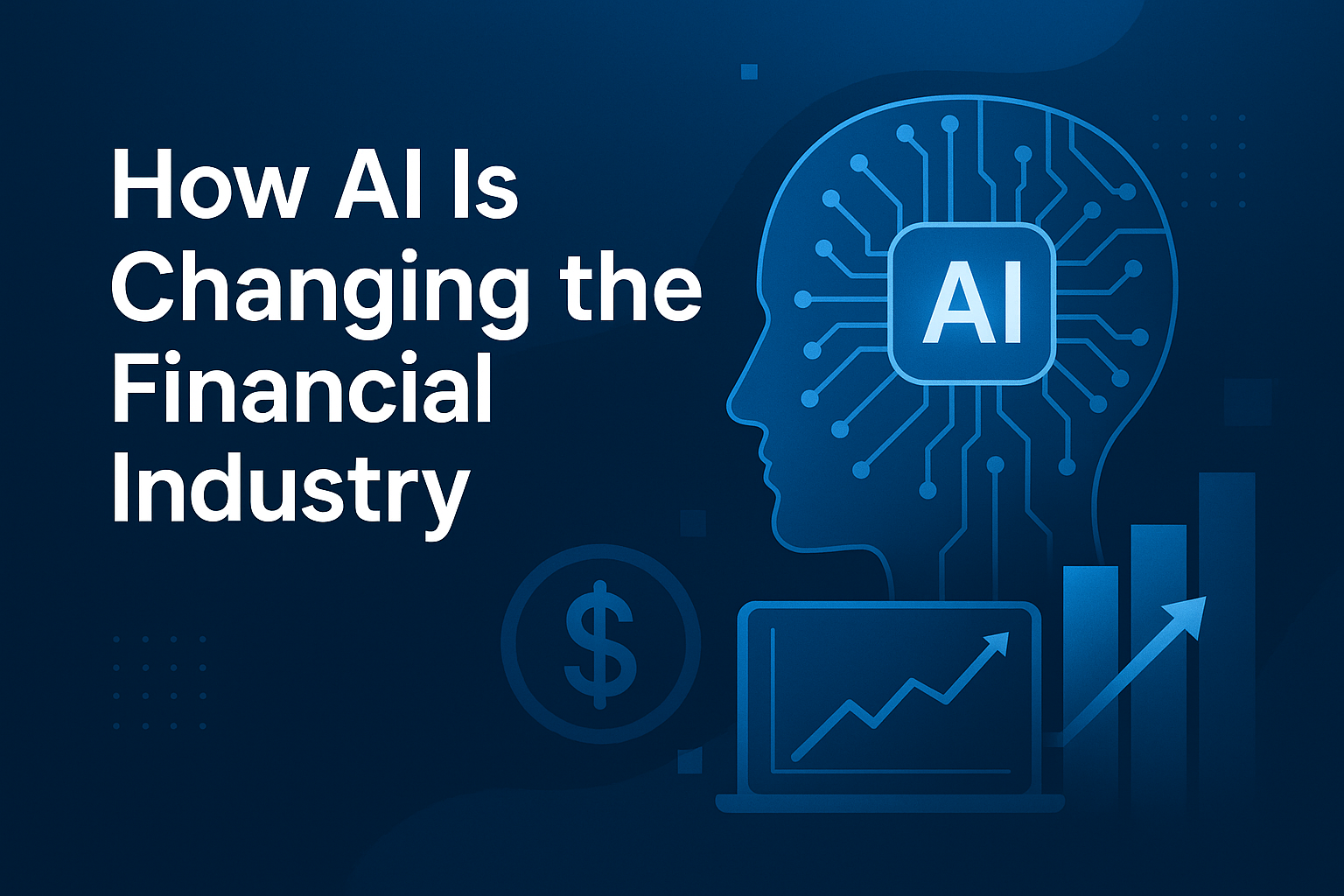The financial industry is no stranger to innovation — from the introduction of ATMs in the 1960s to mobile banking in the 2000s. But nothing has transformed finance as profoundly and rapidly as artificial intelligence (AI). With its ability to process enormous datasets, detect patterns, and make predictions in real-time, AI in finance is changing everything from fraud detection to investment strategies.
The Rise of AI in Finance
Although AI’s roots trace back decades, its large-scale adoption in finance has accelerated in the last 10 years. Advances in computing power, availability of big data, and affordable cloud infrastructure have made AI-driven solutions accessible to institutions of all sizes — from global banks to emerging fintech startups.
According to a 2024 McKinsey report, AI could deliver up to $1 trillion in additional value to the global banking sector annually by 2030.
How AI Is Used in Finance Today
1. Fraud Detection and Prevention
Financial fraud costs the global economy hundreds of billions annually. Traditional systems rely on predefined rules, which are easily bypassed by sophisticated criminals. AI, using machine learning models, adapts to new fraud patterns automatically. Key benefits include:
- Real-time monitoring of millions of transactions
- Detection of subtle, suspicious patterns that humans miss
- Reduced false positives, minimizing unnecessary customer interruptions
Case Example: Mastercard’s AI-powered Decision Intelligence system analyzes each transaction within milliseconds, considering spending history, merchant type, and geolocation to detect anomalies instantly.
2. Algorithmic Trading
AI-driven trading systems process vast market datasets faster than any human trader. These platforms can:
- Predict short-term market movements using sentiment analysis of news and social media
- React to price changes in microseconds
- Continuously refine strategies based on historical performance
Case Example: Renaissance Technologies, a hedge fund, uses machine learning to discover correlations and trading opportunities invisible to conventional analysis.
3. Credit Scoring and Loan Approvals
AI enables lenders to assess creditworthiness more accurately by factoring in alternative data such as:
- Utility and rent payment history
- Online purchasing patterns
- Social and professional network stability
This has opened doors to lending for underbanked populations who lack traditional credit histories.
4. Risk Management
Risk management is the backbone of finance, and AI excels at identifying, quantifying, and mitigating risks. AI models can simulate thousands of market scenarios and stress-test portfolios to prepare institutions for volatile conditions.
5. Personalized Banking
AI allows banks to deliver hyper-personalized recommendations:
- Suggesting investment products aligned with a customer’s goals
- Sending alerts when overspending is detected
- Offering proactive advice on savings and budgeting
Bank of America’s Erica, an AI-powered virtual assistant, has handled over 1.5 billion client interactions, from bill payments to investment tips.
6. Regulatory Compliance (RegTech)
Regulatory compliance is resource-intensive. AI simplifies the process by:
- Monitoring transactions for AML (Anti-Money Laundering) compliance
- Automatically flagging regulatory breaches
- Compiling audit-ready compliance reports
The Technologies Powering AI in Finance
Machine Learning (ML)
ML algorithms adapt over time without human intervention, making them ideal for fraud detection and predictive analytics.
Natural Language Processing (NLP)
NLP enables AI to interpret human language, powering chatbots, automated report generation, and sentiment analysis of news headlines.
Predictive Analytics
This technology forecasts future outcomes based on historical and real-time data, essential for investment strategy planning.
Computer Vision
Used in identity verification, computer vision allows secure, instant onboarding of new clients through facial recognition and document scanning.
Real-World Case Studies
JPMorgan Chase: COiN Platform
Analyzes complex legal contracts in seconds, saving 360,000 hours of legal work annually.
Mastercard: AI for Fraud Detection
Processes transactions globally in milliseconds with real-time fraud scoring.
Wealthfront: Automated Investment
Uses AI to manage diversified portfolios with tax-loss harvesting and goal tracking.
Advantages of AI in Finance
- Faster decision-making
- Improved accuracy in risk assessment
- Reduced operational costs
- Greater accessibility for underserved populations
Challenges and Ethical Concerns
- Bias and fairness: AI models can perpetuate existing biases in data.
- Data privacy: Sensitive customer information must be safeguarded.
- Regulatory uncertainty: Laws around AI are still evolving.
- Job displacement: Automation may replace certain roles in finance.
The Future of AI in Finance
Expect tighter AI-human collaboration. Rather than replacing finance professionals, AI will augment their capabilities, allowing them to focus on strategic decision-making. We will also see AI integrated with blockchain for enhanced transparency, and quantum computing may supercharge AI’s predictive abilities.
Conclusion
AI in finance is not a passing trend — it’s a seismic shift in how the industry operates. From fraud prevention to personalized banking, the changes are deep and irreversible. Financial institutions that fail to adopt AI risk falling behind, while those that embrace it will lead the next generation of innovation.



